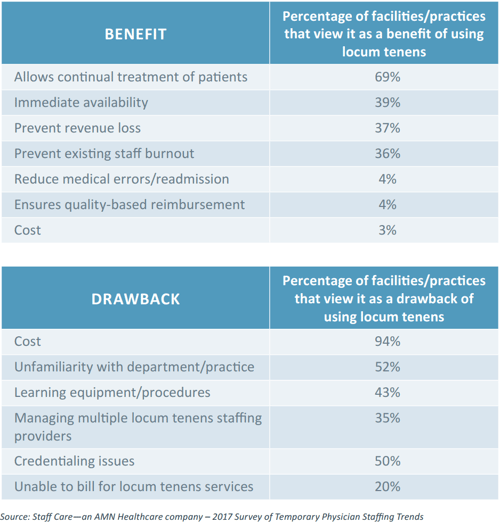Ironically, Working From Home I Feel Closer to My Team Than Ever Before
For me, the collegiality of the practice of radiology is a highlight of my daily work. When I first considered leaving a traditional practice for...

Remote radiologist jobs with flexible schedules, equitable pay, and the most advanced reading platform. Discover teleradiology at vRad.

Radiologist well-being matters. Explore how vRad takes action to prevent burnout with expert-led, confidential support through our partnership with VITAL WorkLife. Helping radiologists thrive.

Visit the vRad Blog for radiologist experiences at vRad, career resources, and more.

vRad provides radiology residents and fellows free radiology education resources for ABR boards, noon lectures, and CME.

Teleradiology services leader since 2001. See how vRad AI is helping deliver faster, higher-quality care for 50,000+ critical patients each year.

Subspecialist care for the women in your community. 48-hour screenings. 1-hour diagnostics. Comprehensive compliance and inspection support.

vRad’s stroke protocol auto-assigns stroke cases to the top of all available radiologists’ worklists, with requirements to be read next.

vRad’s unique teleradiology workflow for trauma studies delivers consistently fast turnaround times—even during periods of high volume.

vRad’s Operations Center is the central hub that ensures imaging studies and communications are handled efficiently and swiftly.

vRad is delivering faster radiology turnaround times for 40,000+ critical patients annually, using four unique strategies, including AI.
.jpg?width=1024&height=576&name=vRad-High-Quality-Patient-Care-1024x576%20(1).jpg)
vRad is developing and using AI to improve radiology quality assurance and reduce medical malpractice risk.

Now you can power your practice with the same fully integrated technology and support ecosystem we use. The vRad Platform.

Since developing and launching our first model in 2015, vRad has been at the forefront of AI in radiology.

Since 2010, vRad Radiology Education has provided high-quality radiology CME. Open to all radiologists, these 15-minute online modules are a convenient way to stay up to date on practical radiology topics.

Join vRad’s annual spring CME conference featuring top speakers and practical radiology topics.

vRad provides radiology residents and fellows free radiology education resources for ABR boards, noon lectures, and CME.

Academically oriented radiologists love practicing at vRad too. Check out the research published by vRad radiologists and team members.

Learn how vRad revolutionized radiology and has been at the forefront of innovation since 2001.

%20(2).jpg?width=1008&height=755&name=Copy%20of%20Mega%20Nav%20Images%202025%20(1008%20x%20755%20px)%20(2).jpg)

Visit the vRad blog for radiologist experiences at vRad, career resources, and more.


Explore our practice’s reading platform, breast imaging program, AI, and more. Plus, hear from vRad radiologists about what it’s like to practice at vRad.

Ready to be part of something meaningful? Explore team member careers at vRad.
3 min read
 Nina Geatrakas, MD
:
November 5, 2020
Nina Geatrakas, MD
:
November 5, 2020
.png)
Today, 96% of healthcare facilities use temporary physicians to fill short term staffing needs. When it comes to radiology, many are discovering that teleradiology providers are a better alternative to traditional locum tenens.
First introduced in the early 1970s, locum tenens has become the standard for medical facilities to fill temporary physician staffing gaps. More recently, telemedicine is gaining greater acceptance as an alternative to locums.
Traditional assumptions were that physicians must be physically on site with each patient, making locums the only temporary staffing option. However, today telehealth is enabling efficient, effective remote communications – both patient-to-physician and physician-to-physician. While there will always be a need for medical professionals with boots on the ground, technology is expanding real-time access to specialized expertise.
In no area of practice is this more evident than in radiology. For the vast majority of diagnostic imaging exams, the radiologist is one of the few members of the patient care team that doesn’t need to be physically present. Images, patient history and medical records can be transmitted virtually anywhere in moments, giving the radiologist everything needed to respond with a thorough, accurate and timely diagnosis. Should the ordering physician wish to talk, video conferencing is just a click away.
Notably, interventional procedures necessitate a radiologist on site. For temporary interventional assignments, a locum is still the prescribed option. In virtually all other cases, a temporary staffing plan with a teleradiology practice can provide distinct advantages.
Each locum brings a particular set of expertise, which is fine if those skills align with the typical study mix at your practice. When you partner with a teleradiology practice, your group pulls from a pool of available radiologists, offering a broader set of expertise. If there is some variability in your caseload with regard to modalities or subspecialty reads, teleradiology provides the advantage of greater access to specialized skills.
The benefits of greater access extend beyond a temporary locum assignment. Perhaps an existing or prospective referrer wants to start sending studies that require a particular area of expertise that’s new to your practice. A teleradiology partnership can allow you to more readily accept these requests. Meanwhile, your management team can take the time to assess the potential of this new area and decide if the volume warrants investment in a full-time specialist, or if a partial-equivalent teleradiologist will meet the demand.
Every medical group has different systems, processes, protocols and personnel. Because of this, there is a learning curve any time you introduce a new person into your organization. Each time a locum enters a new facility the learning curve restarts and just about the time they have discovered how to work together with your staff, it’s time to move on to the next job.
A teleradiology partner integrates into your daily protocols, making for a seamless transition and consistent solution to fill temporary staffing gaps.
Teleradiology gives your organization greater flexibility to adjust to potential spikes or drops in overall imaging volume, or in order volume within areas of specialization.
Prior to COVID-19, medical imaging volume was growing steadily at a relatively predictable rate. I don’t think anyone will ever take market predictability for granted again. Imaging order volumes are likely to continue to fluctuate in the near term and over the long term, as hospitals balance pandemic response efforts with elective and non-emergent procedures.
In an effort to minimize personal contact, the pandemic has many medical facilities rethinking policies regarding the number of on-site staff. Using a teleradiology provider can help reduce the number of on-site personnel and the associated risks, without compromising care quality.
One positive outcome of COVID-19 is that doctors and patients are increasingly recognizing and accepting the benefits of telehealth solutions as safe, effective methods of care delivery.
In general, the fixed daily cost of an on-site locum tenens radiologist is $2,300, plus travel, lodging and placement fees – regardless of the number of billable studies the locum performs during the assignment. So, if the actual volume during a locum’s assignment turns out to be 75% of a projected full-timer, the practice will need to compensate the locum for the difference out-of-pocket.
Teleradiology provides the distinct advantage of a variable cost structure – charging only for each study ordered and completed. Per-study rates may vary by modality or area of specialty, but each study is assigned to a specific billable case, protecting the practice from a potential lull in volume. For additional potential cost savings, a teleradiologist does not incur travel, lodging and placement expenses.

Every practice is different and there are many variables to consider for each temporary opening:
Ultimately, the right solution for temporary contract radiologists depends on the unique needs of your practice. Consider that a combination of both teleradiology and locum tenens may be your best solution.
I encourage you to connect with a vRad representative who can lead you through a no-obligation assessment of your requirements and help you plan the best course of action.
Back to Blog
-1.png)
For me, the collegiality of the practice of radiology is a highlight of my daily work. When I first considered leaving a traditional practice for...

Ever since I was in grade school, I knew I wanted to be a doctor. I discovered radiology in middle school, and you could say it was my first love. ...

Genetic testing empowers women in the fight against breast cancer. One in eight women will develop breast cancer.
vRad (Virtual Radiologic) is a national radiology practice combining clinical excellence with cutting-edge technology development. Each year, we bring exceptional radiology care to millions of patients and empower healthcare providers with technology-driven solutions.
Non-Clinical Inquiries (Total Free):
800.737.0610
Outside U.S.:
011.1.952.595.1111
3600 Minnesota Drive, Suite 800
Edina, MN 55435